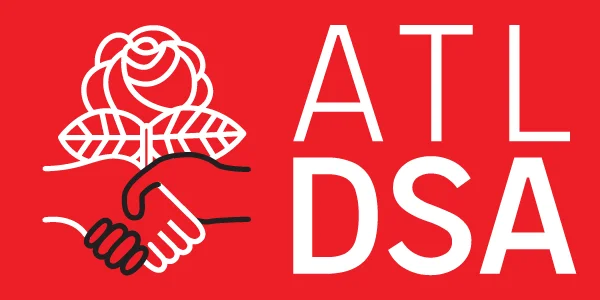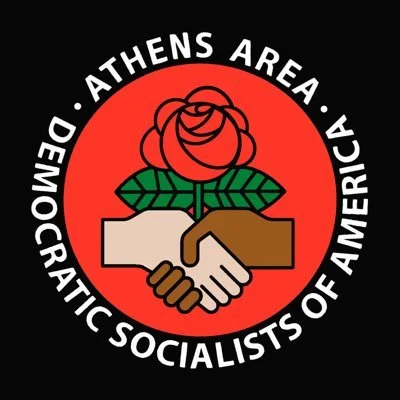

Tuition strike ends for this semester — vote on whether to organize tuition strike for Fall semester
Based on the results of our recent vote, we are not continuing the tuition strike past April 5. Although you are free to continue withholding tuition if you choose, there is no longer any guarantee that you will be joined by 1,000 other students. We understand that many people have to pay tuition in order to maintain their visa status, register for Fall classes, and graduate. We will start disbursing money from the strike fund for anyone whose late fees are not waived by Columbia—you can request funds here if you need them or get in touch with Townes (townesend@gmail.com).
We want to emphasize that the end of the tuition strike for this semester does NOT mean the end of our campaign! We always knew that it would take a long struggle to win our demands and the tuition strike was only one (particularly powerful) tactic within that struggle.
For that reason, we are currently strategizing about how we can best carry our campaign forward into future semesters—and we need your feedback!
As a first step, we are asking all our supporters (regardless of whether you could participate in the tuition strike or not) to participate in a non-binding vote on whether to organize another tuition strike in the Fall semester in support of our demands. We are also asking everyone to share their ideas on additional or alternative tactics and any other feedback you have about how to make the campaign even stronger next semester. Please fill out this form to vote and share your feedback.
We are also asking everyone to join us at our Tuition Strike Debrief / Strategy Session for Next Semester, next Thursday, 4/15, 7 pm ET, in order to discuss the strengths of our movement and what we need to improve going forward, as well as to discuss the question of whether we should organize another, larger tuition strike in the Fall, or whether we should try an alternative tactic.
There are many reasons why a campaign next semester could be successful in winning even more of our demands. We started out last semester with an almost unprecedented tactic and no pre-existing organization, and in the course of just a few months we organized a movement involving 4,700 students, including over a thousand students who withheld their tuition payments in support of our demands, many of them continuing on almost to the end of the semester. Through this struggle, we won fossil fuel divestment, increased financial aid for summer classes, and emergency grants for students.
This was despite the fact that students were spread out across the country and there was almost no possibility of in-person organizing or actions. In future semesters, we will be able to host more disruptive in-person actions like pickets and to organize a much larger number of students. We are also looking into the possibility of developing a longer-term organization with greater resources that we could draw on to organize future campaigns. Most importantly, we now have a more organized student body that is ready and able to take collective action on issues that affect us. And finally, we will be part of a nationwide movement—students at fifteen other universities have already confirmed that they are interested in or committed to organizing a tuition strike at their campus next semester.
That being said, if we are going to have any chance of success, we are going to need your help! This current vote on whether or not to organize a tuition strike for the Fall semester is non-binding partly because we want to involve a greater number of people in our strategic discussions before committing to any approach going forward, and also because we will need a lot more people who can commit to organizing a future campaign. That’s why we’re asking everyone to fill out on this form if you can commit to helping us organize!
We have accomplished something truly unprecedented this semester, but we have a lot of work left to do. We hope that you’ll join us in that continued struggle.
Solidarity,
Columbia YDSA


Defund la Polizie


Important vote on whether to continue tuition strike past April + upcoming actions / events
Starting April 1, we are conducting another round of voting to democratically decide whether the strike should continue after the first Fall registration date of April 5. If you’re currently striking, please fill out this form to cast your vote before midnight on April 2nd so we can announce the results on April 3.
We have been doing our best to understand what potential advantages and consequences may come with continuing to withhold past the Fall registration date, starting April 5 (for some Columbia schools).
The administration has so far been utterly silent in response to our demands since their decision to divest from fossil fuels on January 22nd. This is similar to the administration’s intransigence on the grad workers’ strike and further proof of how unresponsive the administration is to student and worker demands. The advantage of continuing to strike is that, in doing so, we would convey our determination to continue in face of the university’s egregious refusal to address our demands. The administration has a history of “waiting out” student protests—we have the opportunity to show them that this is not a possibility in our case.
On the other hand, we understand that the risks of striking past this point may be too great to incur for many of our strikers to continue. Understanding that many may need to end their strike to register for classes or to graduate, voting to end the strike collectively now would allow us to end this semester’s campaign as a unified movement, rather than people having to drop out individually. Ending the strike would not mean ending the campaign or giving up on our demands, as we will continue to strategize about ways to win our demands through direct pressure in following semesters.
Keeping those advantages and disadvantages in mind, these are the risks of continuing the strike past April 5:
If you are planning to register for Summer or Fall 2021 semesters (and if your unpaid balance is $1,000 or greater): your account will be placed on a financial hold, and you will not be able to register until the balance is paid. Summer registration began on March 8th, and the earliest date listed for Fall registration is April 5th. (except for TC, which began both Summer and Fall registration on March 29).
If you are graduating Spring 2021: graduation holds are placed 30 days prior to the graduation date (i.e. sometime this week), and you will not be able to receive a diploma or transcript until the balance is paid.
These holds are not irreversible, but rather are lifted automatically when tuition is paid. If your unpaid balance is less than $1,000, you will not face these holds.
Please note that if you are an international student and your visa status depends on registering immediately for next semester, we are not asking you to stay on strike if it means risking your visa status! Regardless of the vote result, we understand if you have to drop out of the strike because the risks of not registering are greater than for the average student.
Except in the case of TC, there will no late fees until April 16 at the earliest, but as stated above, Columbia has not been charging the usual monthly fees, likely a direct victory for the strike. At TC, fees have been inconsistent, varying by the amount you’re withholding after the initial $50 fee in January. If you’ve been charged any fees, try to get in touch with Columbia offices to waive these fees if you haven’t yet. If Columbia offices refuse to waive your fees, then request money from our strike fund here. These funds will be disbursed when the strike ends but you can contact columbia.ydsa@gmail.com if you need them earlier.
Finally, we want to invite you to the following upcoming actions and events:
-
Labor Struggles at Columbia: Thursday, April 1 at 6:30 PM ET
- A general meeting to discuss the history labor organizing on campus, including an overview of Barnard contingent faculty organizing by the co-chair of BCF-UAW, and to hear an update on the ongoing strike from a GWC-UAW bargaining committee member. Suggested readings are this history of graduate worker organizing at Columbia, and this piece on the broader implications of the current strike.
- Our meeting next Thursday, April 8 (on the same zoom link) will be a discussion of the Bessemer, Alabama Amazon workers’ struggle for unionization and the results of the vote.
- Register for the meeting!
-
Schumer Owes New York: Student Debt Cancellation Rally: Saturday, April 3, 3:00 PM ET at 9 Prospect Park West, Brooklyn, NY 11215
- Our tuition strike campaign is part of a much larger struggle against austerity and inequality in education. Join us to demand that Senator Schumer supports full student debt cancellation and tuition-free college for all legislation!
- RSVP! and visit the Facebook event page!


Columbia-Barnard Young Democratic Socialists of America Supports Plaintiffs in Chandra Cates, et al., v. The Trustees of Columbia University
March 31, 2021
FOR IMMEDIATE RELEASE – Columbia-Barnard Young Democratic Socialists of America support and stand in solidarity with the plaintiffs in Chandra Cates, et al., v. The Trustees of Columbia University. The University has proven time and time again that it would rather line administrators’ pockets than serve the students, faculty, rank-and-file staff, and surrounding community members that comprise this institution.
The plaintiffs’ struggle is tied to that of striking students—both are about holding the university accountable to the popular interest of its community. Currently, the administration, at best, neglects these interests, and, at worst, is actively antagonistic to them. Columbia workers have been deprived of their full retirement benefits because of the university’s negligence, just as the University neglects students’ demands. To create a truly democratic university, workers and students must stand together and fight against Columbia’s administrative glut, manifest neglect, and misplaced priorities. YDSA supports tens of thousands of Columbia employees and retirees in their fight to recover their retirement savings that they rightfully deserve and that Columbia University has taken away from them.


Atlanta DSA Condemns SB202: As Workers, We Must Organize Against Voter Suppression and More
States in the US have often been lauded as the “laboratories of democracy”. Georgia, on the other hand, has once again made a name for itself as an experiment in authoritarianism.
On March 25th, while confronting Brian Kemp for once again restricting basic democratic processes in Georgia, State Representative Park Cannon was arrested. Since it is illegal to arrest Georgia legislators by misdemeanor during session, Capitol Police charged her with trumped-up felony charges. The bill that Kemp signed into law, SB202, is indefensible; it restricts voting methods, adds complicated and inaccessible hoops, allows the state to intervene in county elections processes, and bans voters taking care of each other while waiting for hours in lines. Instead of allowing criticism, police closed ranks around Kemp and the state Republicans, deflecting the heat by throwing accusations at a Black woman trying to represent her district’s residents.
Let us be clear: racist police and judicial violence has a long and horrible history in this state. For generations, state law enforcement, business interests, and officials have fabricated charges and defended or deflected violence against unionists, Jewish, Black, Asian, and Latino people, and political opponents of a regime of white supremacist capitalism. If Georgia were not a part of the United States empire, it would be painted as an authoritarian oligarchy; instead, our ruling class is given license to consolidate power by violence in the name of “civil political debate”.
As socialists, we of Atlanta DSA recognize that Georgia’s multi-front assault on the rights of its residents is part of a larger project of capitalist domination. ICE imprisons and demonizes immigrants, law enforcement arrests Black State Representatives while tacitly approving racist mass-murder, and unionization rates, worker protections, and wages all remain at rock bottom. The exploitation of the working class has always been racialized; the most exploited workers are those forced to the bottom of a racial caste system. We see this assault on voting rights as only the most recent in a long line of rollbacks of the rights of working people.
Georgia’s ruling class is trying and has always tried to make solidarity illegal. But, as CWA-AFA President Sara Nelson once said, “solidarity is a force stronger than gravity.”
In the past year, working people have expressed tremendous power and won real victories. Unions, especially the predominantly Black Unite Here local 23, delivered a historic defeat to Republicans last November. Latino organizations like Mijente worked tirelessly to defeat the 287(g) program in Cobb and Gwinnett county, ending local law enforcement’s formal collaboration with ICE. In the past few days, national unions like IUPAT and CWA have worked alongside DSA chapters across the country to deliver over half a million phone calls to working people, asking them to flood the voicemails and mailboxes of US Senators and flipping votes to end the filibuster, pass the PRO Act, and pass HB1, the “For the People Act”. Victory is possible, but we must organize and fight together to achieve it.
We, the Steering Committee of Atlanta DSA, call on all working people in the state of Georgia to get organized. This fight did not start with SB202, and it will not end with SB202. As a class, our strength is in our numbers and our coordination. We must overcome racial, gendered, sexual, and caste divisions by fighting alongside one another.
Solidarity is a verb, and we practice it by organizing together, committing together, and moving into struggle together. We ask you to join DSA, to join a local organization, and to join a union if you can.


Atlanta Democratic Socialists of America (ATL DSA) Endorses Rogelio Arcila for Atlanta City Council District 4
The Atlanta chapter of the Democratic Socialists of America (Atlanta DSA) is proud to announce our endorsement of member and fellow Democratic Socialist, Rogelio Arcila for the Atlanta City Council District 4.
Rogelio, born and raised here in Atlanta, is the child of Mexican immigrants and the first Latino to run for Atlanta City Council. After witnessing many years of neglect of the city’s working people by Atlanta’s so-called public servants in favor of tax breaks for developers and ever-increasing budgets for the city police, Rogelio was driven to run for City Council seat for District 4. For too long, our city council has ignored the desires, demands, and needs of the everyday people who keep Atlanta running. Our infrastructure is crumbling, our residents are facing a housing crisis as predatory developers load costs and taxes onto residents, pushing residents out of their long-time homes and making Atlanta too expensive for working people. Even as more corporate wealth sets up shop in Atlanta and taxes rise, there are fewer and fewer resources available for the community’s real needs.
Rogelio believes that our city’s wealth should fulfill the needs of the people, not corporations and developers. This is why Atlanta DSA is enthusiastic in our support for Rogelio as a candidate in a district overlooked by its own public servants. With Rogelio in office, we will have a councilperson who will be accountable to and fight for Atlanta’s working people, not its 1%.
“I am so humbled to receive the support of a group of hardworking and dedicated people whose values align with mine,” said Rogelio. “I know that true power lies with the people, and when we decide to mobilize and act, together we can protect our rights against the encroachment of corporate interests and corruption.”
“We are thrilled to see one of our own fighting for a voice in our city’s future,” said Atlanta DSA co-chair Shafeka Hashash. “Rogelio has already accomplished so much for our chapter’s mission here in Atlanta by serving the city’s everyday people faithfully. I look forward to seeing what more he can accomplish in office.”
If you would like to join in the effort to support Rogelio’s campaign and elect him to office this coming November, you can donate and/or volunteer at voterogelio.com, or you can get involved with Atlanta DSA by joining today at atldsa.org/join.



Protected: March 2021 Regular Meeting Minutes
This post is password protected. You must visit the website and enter the password to continue reading.


Rage Against the Machine with Brandon West
As the budget fight continues to heat up in Albany, workers in New York City are continuing the struggle for power and equity on the job and at school. On tonight’s episode, we’ll visit the picket line at Columbia University, where unionized graduate students are on their second week of a strike to demand fair pay and healthcare. We also hear an update from last Saturday’s NYC-DSA march to Tax the Rich and Impeach Cuomo.
We’re joined LIVE by NYC-DSA endorsed candidate for City Council District 39 (and community radio fan!), Brandon West, to hear about his work to Defund NYPD, defeat machine politics, fund excluded workers, and build working-class power.
To learn more about Brandon West and get involved with his campaign, please visit https://westforcouncil.com/.


